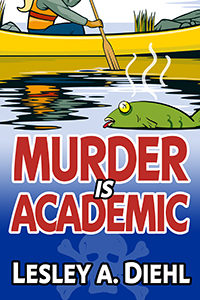In the beginning…
On Friday one of my favorite cozy writers, Nancy J. Cohen and I presented a program to a group of visual artists in Boca Raton, Women in the Visual Arts http://www.floridabooknews.com/2017/01/women-in-visual-arts.html. In discussing our work as cozy mystery writers, we showed some of our book covers. Although Nancy and I had both experienced publishers who gave us book covers we didn’t like much, I think I might have won the prize for the most uninspiring covers ever. The nice thing about getting your rights back from a publisher is that you have the opportunity to have your covers redesigned.
Nancy and I talked about our beginning work in the mystery field. She began as a romance writer, and I plunged right into cozy mysteries. She knew much more about what she was doing than I did. I like to tell the story about my first mystery manuscript. It’s funny. Well, it’s funny looking back. While it’s embarrassing what I did not know then, I think it’s worth revisiting the experience from time to time to keep me humble in case I’m feeling uppity about some writing accomplishment (to be honest, I don’t really have many uppity moments, just moments of feeling good about an accomplishment). I share this experience for another, more important reason: to encourage new writers, to let them know we’ve all been there. There may be as many dreadful pieces of work in trash cans, hidden away in drawers or being used as scrap paper as there are good published books. If you’re going to call yourself a writer—and if you write, you should own it—then you’re going to stumble. A lot.
I followed the advice most of us get when we first begin writing. Write what you know. That may be the most terrible piece of advice I ever received because, by itself, it promises nothing. I was a professor of psychology for many years, so what I knew was academic life. I wrote a mystery with a protagonist who was—you guessed it—a professor of psychology. I knew all the ins and outs of academic life, the politics associated with promotion, tenure, even the politics of getting a plum parking space. Are you yawning as you read this? I included all of them and more in my work, sexual harassment, departmental fights, interdepartmental fights, the rift between administrators and faculty, the disdain of some faculty for students, the fighting between academic affairs and student affairs. Excuse me while I yawn. All of this was in my 123,000 word mystery. It was long, it was detailed, it was accurate, it was dead boring. The protagonist was fashioned after yours truly, and she was boring, too. There was a biker in it, fashioned after my husband. He was probably the only interesting character in the book.
Aside from the length of the thing and the long, convoluted sentences, and its strict adherence to actual events, there was another glaring problem. Let me confess here: after many years in academe I had some axes to grind. And I ground away. It was not only that my murder victim was the president of the college, but many of the faculty and administrators were people lifted straight from real life, so the killer had to be one of them, right? In my defense, I very much liked the president of the university where I was a professor, so it wasn’t he who took the shovel to the head. Instead I did what I should have done with all my other characters. I created the president out of the characteristics and behaviors I least liked in people in positions of authority. Aside from that one accomplishment, the manuscript was mostly a catharsis for me. Once I saw that and moved away from basing my characters on real people and instead fictionalized from compilations of people or a mix of characteristics I’d observed in people I’d met, the manuscript was less about me and more about my characters and the story I had to tell. Numerous rewrites, severe cutting and learning how to write a mystery and what I was writing and who my audience was gave me some ten years later a decent story. I admit that some manuscripts are not salvageable, but I believed this one was.
People I knew from my years at the university have tried to guess what faculty member or administrator is who in my story, but they are always wrong because there is no one person who has become a character in my work. My protagonist has become someone unlike me. Oh, she’s not quite as chubby as I am, but she has my love of chocolate and her biker guy, and shares my value system about the importance of education, but that’s about it. Professor Laura Murphy is her own (fictionalized) person.
Write what you know? That’s only the beginning. A mystery is fiction, not the truth. You have to know how to lie a little. My next book was based upon the microbrewing business, something I knew nothing about. The research was fun. Learning something new, as Nancy Cohen pointed out to the group on Friday is always refreshing to both the writer and the reader.
This doesn’t mean that events in real life don’t find their way in some form into my writing. If you get chased by an irate cook with a cleaver in her hand as I did, it just has to be in a story.
Check out Nancy’s work at www.nancyjcohen.com. She’ll help you get through a bad day.
